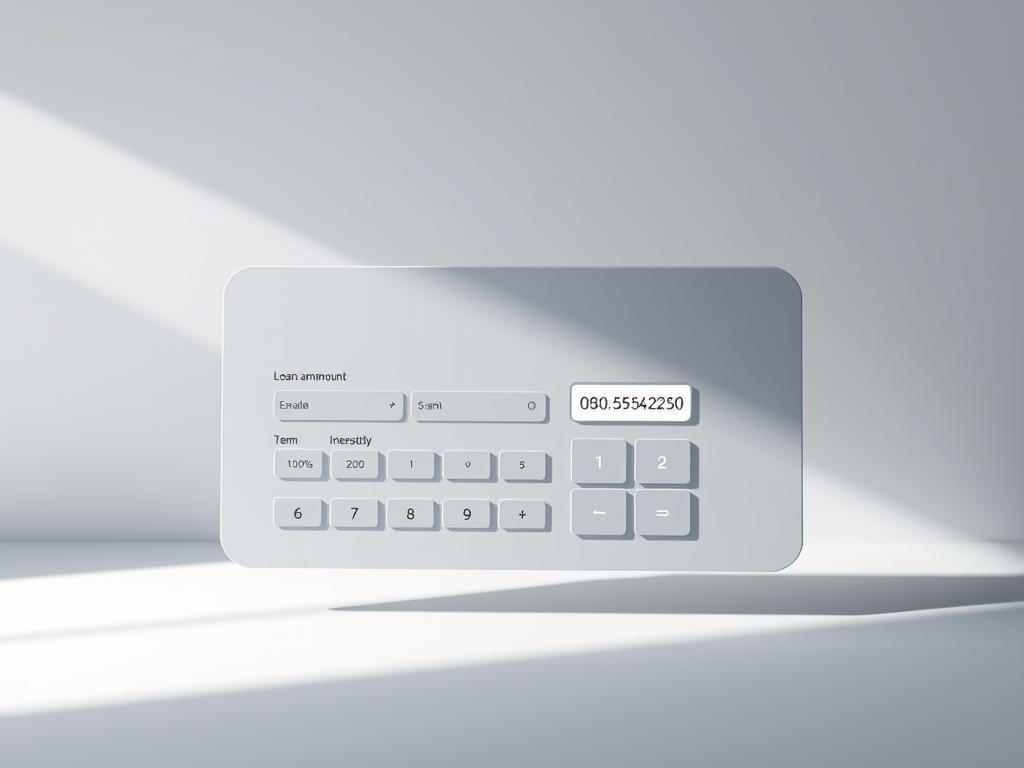Apply online end-to-end and see your potential rate in minutes. You can start the application, check prequalification, and move to funding without visiting a branch.
These unsecured loans from a bank typically run two to seven years with fixed rates available. You receive a lump sum of money and repay predictable monthly payments, which helps with budgeting.
Use the funds for debt consolidation, home projects, medical bills, weddings, or emergencies. You may also see a displayed rate that includes a 0.25% AutoPay discount to lower your cost.
If you have questions, U.S.-based customer support is available seven days a week. Funding can move fast—some approvals and disbursements occur within a day to a week—so plan your timing and loan amount before you apply.
Key Takeaways
- Start and finish your application online without visiting a branch.
- Fixed-rate, unsecured loans with terms from 2–7 years.
- Use funds for consolidation, repairs, medical bills, or events.
- Rates may include a 0.25% AutoPay discount to lower cost.
- U.S.-based support is available seven days a week.
- Prequalification checks use a soft credit inquiry in most cases.
- Funding can be quick—plan if you need money by a certain time.
Why choose SoFi personal loans for your needs
A fixed-rate unsecured loan can give you steady monthly payments for planned expenses or sudden needs.
Use the funds for many purposes. You can consolidate high-interest credit card debt, finance a home renovation, pay medical bills, or cover wedding costs. A single loan replaces multiple due dates with one predictable payment.
Terms typically range from two to seven years. Shorter terms raise monthly payments but often cut total interest. Longer terms lower monthly costs but can increase interest paid over the years.
“A clear repayment schedule helps you plan and reduces the surprises that come with variable-rate credit.”
Compare options before applying. Look at rate, term length, and fees. Choose the combination that matches your timeline and budget. If you have contractors or vendors, align funding to milestones for smoother execution.
| Common Use | Why it helps | Typical term |
|---|---|---|
| Debt consolidation | Simplifies payments and may lower overall interest | 2–5 years |
| Home improvements | Predictable payments during the project | 3–7 years |
| Medical bills / emergencies | Fast access to funds with set repayment | 2–6 years |
| Weddings / events | Streamlines vendor payments into one monthly obligation | 1–4 years |
- Fixed interest rates lock your monthly payment for the term.
- Match term length to your budget to balance monthly cost and total interest.
- Check credit and compare offers to find the best rate and options for your purpose.
Estimate your monthly payments with the personal loan calculator
Use the calculator to quickly model how different loan sizes and terms change your monthly cost. Enter the total amount you want, set the term in months, and input an APR to produce an estimated monthly payment.

Enter your loan amount, term in months, and APR
Type the number for your loan and choose months to see how shorter terms raise monthly payments but reduce total interest. Input an expected interest rate or a weighted average APR if you’re consolidating multiple balances.
Adjust payment frequency to explore savings
Toggle between monthly, biweekly, or weekly payments to model faster payoff. More frequent payments can cut interest and lower lifetime cost.
Understand your results
Results compare your current monthly payments with an estimated monthly payment and show projected monthly and lifetime savings. Use these figures to test different scenarios and find what fits your cash flow.
Important notes
Estimates only: this tool provides informational numbers and is not an offer. All displayed rates include a 0.25% AutoPay discount, which can lower your final rate if you enroll.
personal-loan-sofi eligibility, credit score, and interest rates
Your eligibility often comes down to a few clear numbers: credit score, dti, and documented income.
Credit score basics
A good credit score (670–739) or higher improves your odds and can earn you a lower rate. Lenders review your score to decide both approval and pricing.
Debt-to-income and ratio
Keep your DTI below 36% when possible. A lower ratio signals capacity to repay and strengthens an application from a bank.
Income and documentation
Be ready with pay stubs, recent tax returns, and bank statements. These requirements confirm your income and speed verification.
How history affects rates and payments
Your credit history and payment record shape the interest rates offered. Better history lowers your monthly payment and cuts total interest over the years.
Fixed vs variable rates
Fixed rates keep your monthly payment steady. Variable rates can change with markets, so your payment may rise or fall during the term.
- A hard inquiry will occur once you apply; it may lower your score by a few points temporarily.
- Choose a term that balances a manageable monthly payment with total cost.
- Check prepayment policies if you plan early repayment.
The application process, prequalification, and fast funding
Start your application by checking a soft prequalification to see an estimated rate and monthly payment without affecting your credit. That quote shows an estimated amount, payment, and interest rate so you can compare options before applying.
Check your rate with soft-credit prequalification and compare options
Soft checks won’t hurt your score. Use them to shop multiple offers and weigh fees, term lengths, and projected payments.
Complete your application: hard inquiry, requirements, and verification
When you decide to proceed, submit documentation: pay stubs, tax returns, and bank statements. Consent to a hard inquiry for final approval; it can temporarily lower your score by a few points.
Approval and funding timeline
Funding can be fast. Some approvals and disbursements occur the same day, but most happen within one to seven days. Plan your timing if you need money by a specific date.
Optimize your terms and save with AutoPay
- Select a loan amount and repayment term that fits your monthly budget and long-term savings goals.
- Enroll in AutoPay to qualify for a 0.25% rate discount and reduce total interest.
- Review disclosures carefully to confirm APR, payment schedule, and any fees.
“Use prequalification to shop confidently — compare rates, fees, and term lengths before you lock in an offer.”
Conclusion
Make a clear plan: pick an amount and term that keeps monthly payments realistic and protects your credit. Use prequalification to see a potential rate without a hard hit to your credit.
Confirm income documents and aim for a DTI below 36% to strengthen approval odds. Treat the loan calculator results as estimates, not guarantees, and factor in the 0.25% AutoPay discount if you enroll.
Plan timing—allow one to seven days for funding, with same-day disbursement possible if verification finishes quickly. Review disclosures, check prepayment terms, and make on-time payments to protect your score and lower total interest.
FAQ
How do I request a personal loan with SoFi?
You start by checking prequalification online to see estimated rates with a soft credit check. Then complete the full application, provide required documents like pay stubs or bank statements, and accept the loan offer. Funding can arrive as soon as the same day or within a few business days once verified.
What common uses are recommended for a SoFi loan?
Many borrowers use loans for debt consolidation, home improvements, medical bills, weddings, or emergency expenses. Match the loan term and amount to the purpose so monthly payments fit your budget and reduce overall interest where possible.
How does the loan calculator estimate my monthly payment?
Enter the loan amount, term in months, and APR into the calculator. It computes your monthly payment using standard amortization and shows total interest paid. You can change payment frequency to compare outcomes.
Can I model different payment frequencies in the calculator?
Yes. You can switch between monthly, biweekly, and weekly payments to see how faster schedules lower total interest and shorten repayment time. The tool highlights potential lifetime savings from accelerated payments.
What should I know about the calculator results?
Results are estimates and not loan offers. They display current monthly payments, an estimated lender payment, and projected savings. Some rates may reflect a 0.25% AutoPay discount if you enroll, but actual offers depend on your credit and verification.
What credit score do I need to qualify and get competitive rates?
A credit score in the Good range (about 670–739) or higher improves your chances of approval and yields lower interest rates. Lower scores may still qualify, but expect higher rates and stricter terms.
How does your debt-to-income ratio affect approval?
Lenders typically prefer a DTI below about 36%. A lower ratio shows you have more capacity to handle new payments, which strengthens your application and can improve rate offers.
What income and documentation will you need to apply?
Be ready to provide recent pay stubs, tax returns, and bank statements. Self-employed applicants often need additional documentation. Accurate income verification speeds approval and funding.
How does credit history affect interest rates and monthly costs?
A longer, positive credit history signals lower risk and leads to lower interest, smaller monthly payments, and less total cost. Negative marks or thin history typically increase rates and monthly obligations.
Should you choose a fixed or variable rate?
A fixed rate keeps your monthly payment stable for the loan term, which helps with budgeting. Variable rates may start lower but can rise, increasing your payment. Choose based on tolerance for risk and how long you expect to repay.
What is soft prequalification and how does it affect my credit?
Soft prequalification checks estimated rates using a soft inquiry that doesn’t affect your credit score. It helps you compare options before committing. A full application triggers a hard inquiry, which can impact your score slightly.
What happens during the full application and verification?
The lender conducts a hard credit pull, verifies income and identity, and may request supporting documents. This step confirms the offer and finalizes the rate and terms before funding.
How long does approval and funding usually take?
Approval can range from minutes for prequalified applicants to a few days after document review. Funding often completes within one day to a week; same-day funding may be available when verification is quick.
How can you optimize your loan terms to lower monthly payments?
You can adjust the loan amount, extend the repayment term, or improve your credit profile before applying. Enrolling in AutoPay may earn a 0.25% rate discount, reducing monthly cost and total interest.



